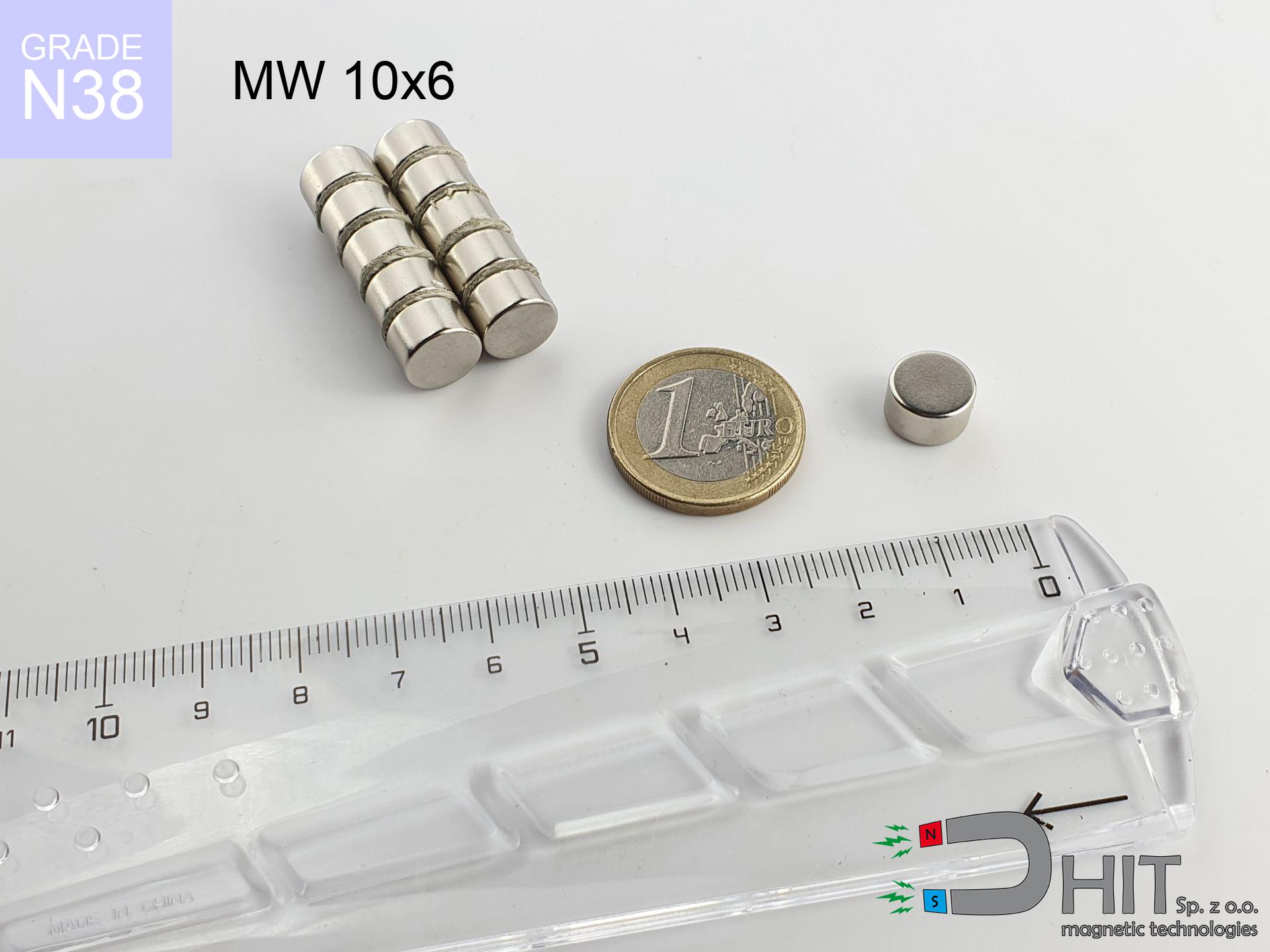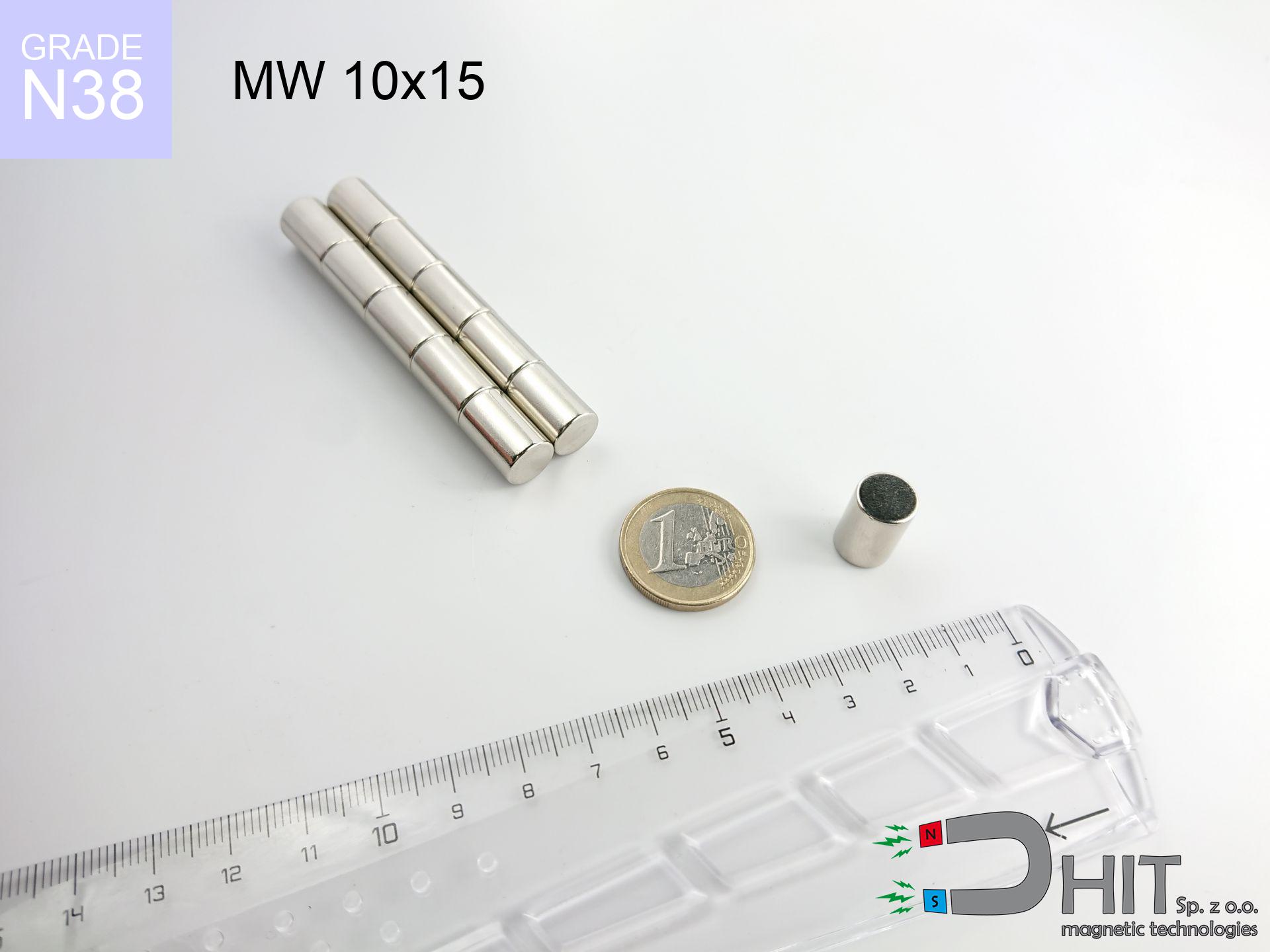UMGW 60x30x15 [M10] GW / N38 - magnetic holder internal thread
magnetic holder internal thread
Catalog no 180419
GTIN/EAN: 5906301813781
Diameter Ø
60 mm [±1 mm]
Height
30 mm [±1 mm]
Height
15 mm [±1 mm]
Weight
260 g
Load capacity
112.00 kg / 1098.34 N
102.96 ZŁ with VAT / pcs + price for transport
83.71 ZŁ net + 23% VAT / pcs
bulk discounts:
Need more?
Contact us by phone
+48 888 99 98 98
if you prefer let us know using
form
our website.
Strength as well as form of a neodymium magnet can be reviewed on our
magnetic calculator.
Order by 14:00 and we’ll ship today!
Technical specifications UMGW 60x30x15 [M10] GW / N38 - magnetic holder internal thread
Specification / characteristics - UMGW 60x30x15 [M10] GW / N38 - magnetic holder internal thread
| properties | values |
|---|---|
| Cat. no. | 180419 |
| GTIN/EAN | 5906301813781 |
| Production/Distribution | Dhit sp. z o.o. |
| Country of origin | Poland / China / Germany |
| Customs code | 85059029 |
| Diameter Ø | 60 mm [±1 mm] |
| Height | 30 mm [±1 mm] |
| Height | 15 mm [±1 mm] |
| Weight | 260 g |
| Load capacity ~ ? | 112.00 kg / 1098.34 N |
| Manufacturing Tolerance | ±1 mm |
Magnetic properties of material N38
| properties | values | units |
|---|---|---|
| remenance Br [min. - max.] ? | 12.2-12.6 | kGs |
| remenance Br [min. - max.] ? | 1220-1260 | mT |
| coercivity bHc ? | 10.8-11.5 | kOe |
| coercivity bHc ? | 860-915 | kA/m |
| actual internal force iHc | ≥ 12 | kOe |
| actual internal force iHc | ≥ 955 | kA/m |
| energy density [min. - max.] ? | 36-38 | BH max MGOe |
| energy density [min. - max.] ? | 287-303 | BH max KJ/m |
| max. temperature ? | ≤ 80 | °C |
Physical properties of sintered neodymium magnets Nd2Fe14B at 20°C
| properties | values | units |
|---|---|---|
| Vickers hardness | ≥550 | Hv |
| Density | ≥7.4 | g/cm3 |
| Curie Temperature TC | 312 - 380 | °C |
| Curie Temperature TF | 593 - 716 | °F |
| Specific resistance | 150 | μΩ⋅cm |
| Bending strength | 250 | MPa |
| Compressive strength | 1000~1100 | MPa |
| Thermal expansion parallel (∥) to orientation (M) | (3-4) x 10-6 | °C-1 |
| Thermal expansion perpendicular (⊥) to orientation (M) | -(1-3) x 10-6 | °C-1 |
| Young's modulus | 1.7 x 104 | kg/mm² |
Elemental analysis
| iron (Fe) | 64% – 68% |
| neodymium (Nd) | 29% – 32% |
| boron (B) | 1.1% – 1.2% |
| dysprosium (Dy) | 0.5% – 2.0% |
| coating (Ni-Cu-Ni) | < 0.05% |
Ecology and recycling (GPSR)
| recyclability (EoL) | 100% |
| recycled raw materials | ~10% (pre-cons) |
| carbon footprint | low / zredukowany |
| waste code (EWC) | 16 02 16 |
See also products
Pros and cons of rare earth magnets.
Benefits
- They retain magnetic properties for around 10 years – the drop is just ~1% (according to analyses),
- They retain their magnetic properties even under external field action,
- The use of an elegant layer of noble metals (nickel, gold, silver) causes the element to have aesthetics,
- They are known for high magnetic induction at the operating surface, which improves attraction properties,
- Neodymium magnets are characterized by very high magnetic induction on the magnet surface and can work (depending on the form) even at a temperature of 230°C or more...
- In view of the potential of precise shaping and adaptation to custom solutions, neodymium magnets can be manufactured in a broad palette of geometric configurations, which amplifies use scope,
- Fundamental importance in modern technologies – they are commonly used in mass storage devices, electric drive systems, diagnostic systems, and technologically advanced constructions.
- Thanks to their power density, small magnets offer high operating force, occupying minimum space,
Limitations
- At very strong impacts they can break, therefore we recommend placing them in steel cases. A metal housing provides additional protection against damage and increases the magnet's durability.
- Neodymium magnets decrease their power under the influence of heating. As soon as 80°C is exceeded, many of them start losing their power. Therefore, we recommend our special magnets marked [AH], which maintain durability even at temperatures up to 230°C
- Magnets exposed to a humid environment can corrode. Therefore when using outdoors, we advise using water-impermeable magnets made of rubber, plastic or other material resistant to moisture
- Limited ability of making threads in the magnet and complicated forms - preferred is cover - magnetic holder.
- Possible danger to health – tiny shards of magnets can be dangerous, if swallowed, which gains importance in the aspect of protecting the youngest. Additionally, tiny parts of these magnets can be problematic in diagnostics medical in case of swallowing.
- High unit price – neodymium magnets have a higher price than other types of magnets (e.g. ferrite), which increases costs of application in large quantities
Holding force characteristics
Maximum lifting capacity of the magnet – what contributes to it?
- using a plate made of high-permeability steel, functioning as a circuit closing element
- possessing a thickness of min. 10 mm to avoid saturation
- characterized by lack of roughness
- under conditions of no distance (surface-to-surface)
- for force applied at a right angle (pull-off, not shear)
- in stable room temperature
Practical lifting capacity: influencing factors
- Air gap (betwixt the magnet and the plate), since even a very small clearance (e.g. 0.5 mm) leads to a decrease in lifting capacity by up to 50% (this also applies to varnish, corrosion or dirt).
- Force direction – declared lifting capacity refers to pulling vertically. When applying parallel force, the magnet holds significantly lower power (typically approx. 20-30% of nominal force).
- Wall thickness – the thinner the sheet, the weaker the hold. Part of the magnetic field passes through the material instead of generating force.
- Material composition – not every steel attracts identically. High carbon content weaken the attraction effect.
- Plate texture – smooth surfaces guarantee perfect abutment, which improves field saturation. Rough surfaces weaken the grip.
- Operating temperature – NdFeB sinters have a sensitivity to temperature. At higher temperatures they are weaker, and in frost gain strength (up to a certain limit).
Lifting capacity testing was conducted on plates with a smooth surface of optimal thickness, under perpendicular forces, whereas under shearing force the holding force is lower. Additionally, even a minimal clearance between the magnet’s surface and the plate lowers the load capacity.
H&S for magnets
Fire risk
Combustion risk: Rare earth powder is highly flammable. Do not process magnets in home conditions as this may cause fire.
Data carriers
Very strong magnetic fields can destroy records on payment cards, hard drives, and storage devices. Maintain a gap of min. 10 cm.
Impact on smartphones
An intense magnetic field interferes with the functioning of magnetometers in phones and navigation systems. Do not bring magnets close to a smartphone to prevent breaking the sensors.
Operating temperature
Keep cool. NdFeB magnets are sensitive to heat. If you require resistance above 80°C, inquire about HT versions (H, SH, UH).
Sensitization to coating
Some people suffer from a contact allergy to nickel, which is the common plating for neodymium magnets. Frequent touching can result in dermatitis. We strongly advise wear safety gloves.
Keep away from children
Adult use only. Small elements pose a choking risk, causing serious injuries. Keep out of reach of children and animals.
Shattering risk
Protect your eyes. Magnets can explode upon uncontrolled impact, ejecting shards into the air. We recommend safety glasses.
Pinching danger
Large magnets can crush fingers in a fraction of a second. Do not put your hand betwixt two attracting surfaces.
Life threat
Patients with a heart stimulator must keep an large gap from magnets. The magnetism can interfere with the functioning of the implant.
Conscious usage
Handle with care. Rare earth magnets attract from a distance and connect with massive power, often faster than you can react.

![Magnetic holder with internal thread UMGW 60x30x15 [M10] GW / N38 Magnetic holder with internal thread UMGW 60x30x15 [M10] GW / N38](https://cdn3.dhit.pl/graphics/banners/magnet.webp)
![UMGW 60x30x15 [M10] GW / N38 - magnetic holder internal thread](https://cdn3.dhit.pl/graphics/products/umgw-60x30x15-m10-gw-cug.jpg)
![UMGW 60x30x15 [M10] GW / N38 - magnetic holder internal thread - ujęcie 2](https://cdn3.dhit.pl/graphics/products/umgw-60x30x15-m10-gw-fot.jpg)


![UMGGZ 22x6 [M4] GZ / N38 - rubber magnetic holder external thread UMGGZ 22x6 [M4] GZ / N38 - rubber magnetic holder external thread](https://cdn3.dhit.pl/graphics/products/umg-22x6-m4-gz-hiw.jpg)


